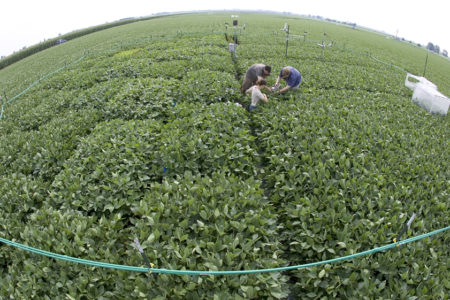October 4, 2019 – A recent article appearing in The Lancet described how increasing levels of carbon dioxide (CO2) are causing decreasing yields in cereal crops in a number of regions because of:
- increasing temperatures
- precipitation pattern changes
- increasing ground-level ozone
- more frequent and extreme heatwaves
- more floods
- more droughts
The tropics are the area of the planet most affected with lower crop yields and increased stunting.
Higher levels of CO2 does increase photosynthesis in C3 plants, representing 75% of the world’s food crops including rice, wheat, barley, and potatoes. These are notoriously slow-growing plants and the greater CO2 exposure produces more carbohydrates and less of the micronutrients and minerals critical to human nutrition. And although the extra CO2 may lead to bigger yields, the nutritional quality of what is harvested is deficient.
Why is this a “growing” problem?
Decreases in nutritional quality of crops doesn’t solve the problem of food insecurity on Earth.
In 2017, over 820 million people experienced malnutrition. Of this total 151 million were children, with over 50 million showing symptoms of starvation leading to stunting, muscle wasting, and reduced cognitive development.
The micronutrient and mineral deficiencies, a lack of iron and zinc, are impacting almost 2 billion today. The symptoms in our population include changes to metabolism, increased obesity, and juvenile diabetes, and lifetime health issues leading to reduced lifespan.
That’s what elevated levels of CO2 in plants will lead to, and not the greener world of climate change skeptics and those who think more CO2 would be a good thing.
And then there is the impact on livestock.
Today cattle, pigs, sheep, and goats contribute to 15% of the global nutrition supply. Increasing CO2 has an unforeseen impact on the nitrogen balance in grasslands used for foraging. The reduced nitrogen levels produces protein stress in livestock and leads to decreased weight gain. For farmers in the U.S., there is an added cost estimated at $1.9 billion annually to supplement the missing protein.
In the Lancet article, it called for research to deal with the CO2 challenge to both cereal crops and livestock.
On the plant side, one answer may be genetically engineering C3s to become C4 plants.
C4 plants include corn, sugar cane, other grasses, and some common weeds. They all contain an enzyme called D-Ribulose-1, Bisphosphate Carboxylase/Oxygenase or RuBisCO. The RuBisCO in C4 plants improves photosynthetic efficiency. By isolating a cyanobacteria containing RuBisCO found in C4 plants and introducing it into C3 food crops it would produce immediate benefits including:
- speeding up CO2 conversion
- increasing growth speed
- increasing the number of plantings in tropical countries.
The RuBisCO found in C4 plants turbocharges photosynthesis. But even better it gives C4 plants the ability to handle hotter and drier conditions. At the same time the increased atmospheric CO2 has little effect on yield nutritional quality. And a final benefit is that over time C4 plants require less nitrogen in the soil to grow which means less need for fertilizers.
So in a world facing food insecurity and rising CO2 levels, genetically-engineering our food crops may be one of the best ways for us to adapt to the physical changes to the planet from global warming.
















